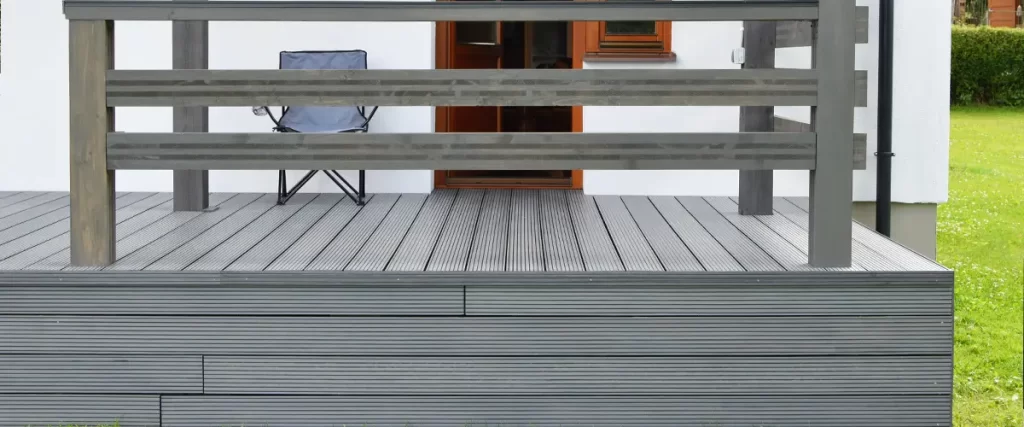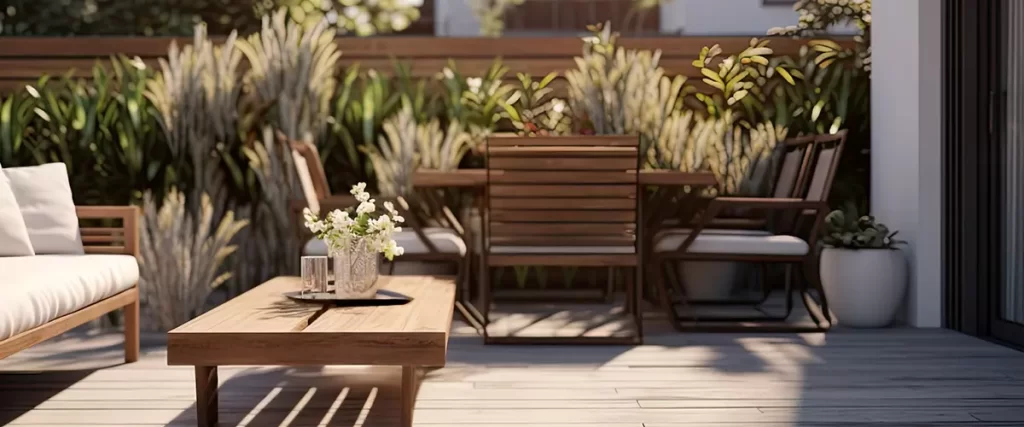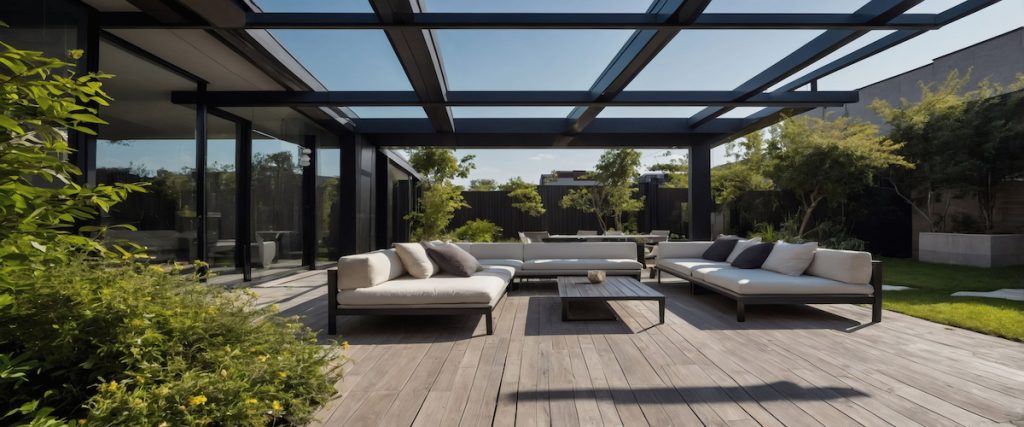Let’s be real what’s under your deck right now? A pile of leaves? Muddy footprints? Maybe even a stray animal or two? You’re definitely not the only homeowner who’s cringed at that mess. That empty space under your deck is just begging for some love, and deck skirting is the smart solution that makes your outdoor space look better, function better, and feel complete.
Skirting isn’t just about looks (though that’s a big part). It keeps out critters, protects your foundation, gives you the option for hidden storage, and adds a polished, finished look to your home’s exterior. And if you live in a place with a humid climate and frequent temperature swings like we get around here, choosing the right skirting becomes even more important.
This guide will walk you through everything you need to know about deck skirting ideas, styles, materials, DIY tips, and more. Whether you’re looking to upgrade a basic deck or you’re planning a full renovation, you’ll find plenty of inspiration and useful info to help you do it right.

Why Deck Skirting Matters
Most people don’t think twice about that space under their deck until animals move in or water damage starts creeping up the supports. Here’s why adding skirting is a no-brainer:
- Pest control: Keeps out raccoons, possums, stray cats, and other wildlife looking for a cozy place to crash.
- Weather protection: Shields your deck supports from standing water, snow, and debris buildup.
- Added storage: With proper ventilation and an access door, it becomes a hidden storage area.
- Visual upgrade: Seriously improves curb appeal and makes your deck feel like a true extension of your home.
- Improved airflow: Certain types of skirting allow ventilation, which helps prevent moisture buildup that can lead to rot.
Best Materials for Deck Skirting (And Why They Work)
There’s no one-size-fits-all answer when it comes to skirt material. It really depends on your style, your budget, and how much maintenance you’re okay with. Let’s go over some of the best deck skirting materials you can consider.
Lattice (Wood or Vinyl)
- Look: Classic and decorative, with that crisscross pattern you’ve probably seen before.
- Pros: Allows great airflow, keeps costs down, and adds a traditional touch.
- Cons: Wood lattice requires regular maintenance; vinyl lasts longer but can crack if not installed properly.
Vertical or Horizontal Wood Planks
- Look: Clean and modern or rustic depends on the spacing and finish.
- Pros: Easy to match to your home or deck. Budget-friendly if you use pressure-treated lumber.
- Cons: Needs to be stained or sealed every few years to stay in good shape.
Composite Panels
- Look: Sleek, uniform, and durable, great for matching composite decking.
- Pros: Low maintenance, long lifespan, won’t rot or warp.
- Cons: Pricier up front, but worth it long term if you don’t want upkeep.
Faux Stone or Brick Veneer
- Look: High-end and realistic without the weight of real masonry.
- Pros: Very durable and weather-resistant. Ideal for homes that already have brick or stone elements.
- Cons: Higher cost, and may need professional installation.
Corrugated Metal
- Look: Industrial, bold, and modern.
- Pros: Weather-resistant, pest-proof, and extremely low maintenance.
- Cons: Can be sharp if not handled properly. Requires clean framing to look polished.
How to Choose the Right Skirting for Your Deck
Feeling overwhelmed with all the choices? Here’s a quick checklist to help guide your decision:
- Climate: Go for moisture-resistant materials if you deal with heavy rain or humidity.
- Budget: Vinyl and pressure-treated wood are affordable; composite and veneer are more premium.
- Style: Choose a look that complements your home, don’t be afraid to get creative.
- Maintenance: Be honest about how much upkeep you’re willing to do.
- Ventilation needs: Always allow for airflow, especially in humid areas.
Popular Deck Skirting Designs That Homeowners Love
Now let’s talk style. Here are a few popular skirting looks that blend form and function beautifully:
Classic White Lattice
Perfect for traditional homes and cottage-style decks. Pairs well with white trim and painted railings.
Horizontal Wood Slats
Clean and modern. Use narrow gaps for ventilation while keeping critters out.
Mixed Material Skirt
Combine stone veneer on the bottom with wood slats above for a rustic-meets-modern vibe.
Painted Solid Panels
Great if you want total coverage. Match the paint to your siding for a seamless finish.
Metal-Framed Mesh
Perfect for modern or industrial styles. Add a swing door for hidden access.

Best Manufacturers for Deck Skirting Materials
Reliable deck skirting starts with reliable materials. Here are a few top manufacturers to look into:
Trex:
Known for durable composite decking and skirting that holds up against weather and wear.
Offers composite panels and trim with fade and moisture resistance for long-term performance.
Provides a variety of skirting options, including decorative panels and lattice with clean finishes.
Their faux stone panels give a high-end look without the weight or installation hassles of real stone.
They make heavy-duty vinyl lattice and privacy panels that are perfect for low-maintenance homes.
We’ve Been Skirting Decks Like Pros for Years
Here’s the deal: we’ve been building, upgrading, and repairing decks, including skirting, long enough to know what works and what doesn’t. Our team understands local weather, building practices, and how to get things done efficiently and correctly the first time. As with anything in life, when you work with pros, you get professional results, which saves you time, money, and stress down the road.
If you’re ready to tackle your project with a team that knows what they’re doing, contact us at (865) 801-4545 and let’s get it started.

Frequently Asked Questions
Does deck skirting need to be ventilated?
Yes, absolutely. Without ventilation, moisture gets trapped and can cause wood rot, mildew, and even mold.
What’s the most affordable skirting option?
Vinyl lattice or pressure-treated wood is usually the most budget-friendly while still offering decent durability.
Can I use my skirting area for storage?
Definitely just make sure the area stays dry, and consider adding an access panel or door.
How tall should my deck skirting be?
That depends on your deck’s height. Always measure from the ground to the base and plan accordingly.
What’s the easiest material to maintain?
Composite and vinyl require almost no upkeep, just an occasional rinse with a hose to keep them clean.
Will skirting stop animals from getting under my deck?
Yes, if it’s installed properly and sealed around the base. Add hardware cloth behind the lattice for extra protection.
Can I install deck skirting myself?
If you’re handy and have the right tools, yes. But if you want a clean, polished look, pro installation is worth it.
Is deck skirting required by code?
In most cases, no. But some HOAs and local municipalities have guidelines, so it’s a good idea to check your local building authority’s website.
Time to Wrap It Up (and Wrap That Deck!)
Deck skirting might seem like a small detail, but it makes a big difference. It keeps your space cleaner, safer, and better looking while helping you get more out of your deck investment.
Whether you’re going with a traditional lattice look or something bold and modern, the key is picking a material and design that fits your home, your lifestyle, and your climate.
And if you want help from people who know this stuff inside and out, we’ve got you covered. Contact us at (865) 801-4545, and let’s start your deck-building project.

